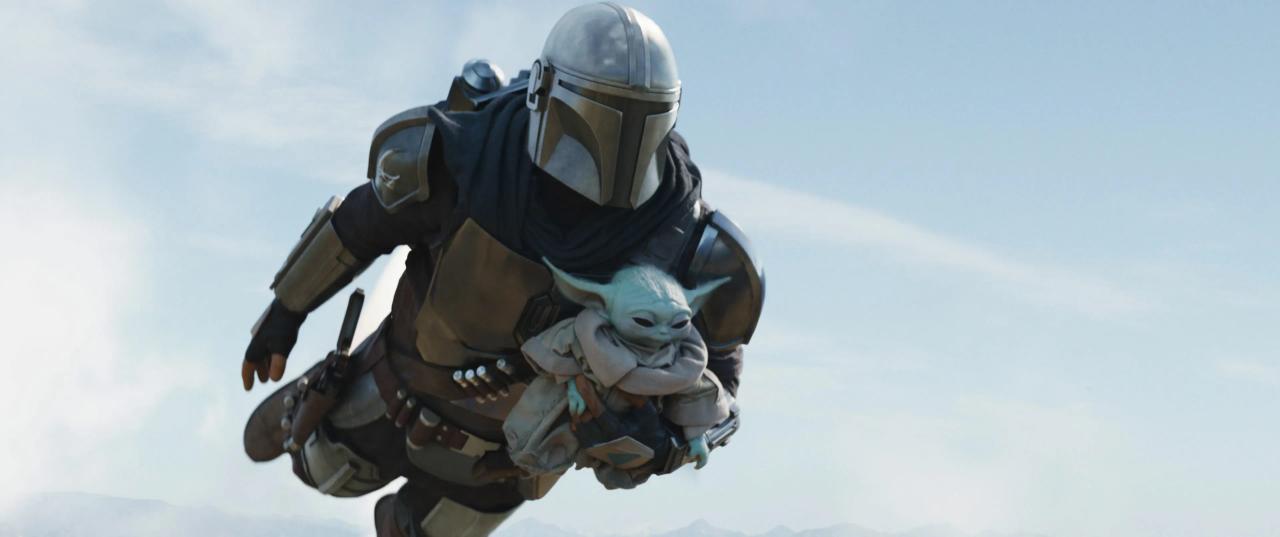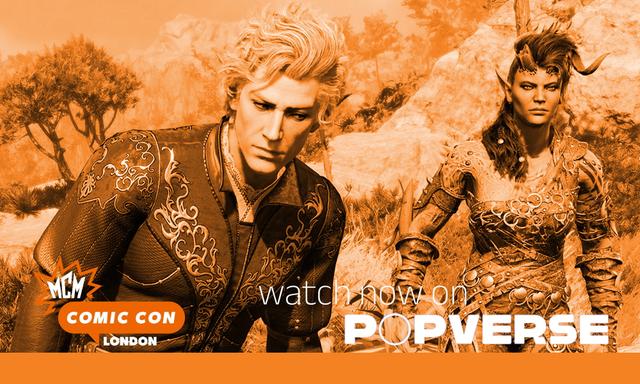If you click on a link and make a purchase we may receive a small commission. Read our editorial policy.
The Mandalorian succeeds by telling new stories in an old way
For as original and fresh as the Mandalorian feels, beneath the surface it works because of the ways it draws on Star Wars.

As a huge long-time fan of Star Wars — I may have a Darth Vader action figure collector’s case somewhere in my closet — I’ve followed the flurry of live action Star Wars TV shows on Disney+ with excitement. And while Andor just blew me away, the show that has fascinated me the most is the Mandalorian. The character and his religious sect are completely new to the Star Wars universe, and thematically the show seems far less interested in the typical Star Wars ideas of hope, mercy, and redemption than in exploring the struggle to overcome trauma. So many of the characters we meet in The Mandalorian have endured horrors as a result of the Empire and the rebellion — or in some cases inflicted the same. Each searches for their own path forward.
But despite its differences, somehow from the very beginning the show has always felt like Star Wars. For the three years now I’ve been asking myself, how does it do that? Here’s what I’ve come up with ahead of The Mandalorian season 3.
The Mandalorian dances between the raindrops

While The Mandalorian is very much its own tale, with a character who (blessedly) has no connection to the broader saga — he’s not Luke’s long lost son, or Han’s secret brother — his story moves amongst elements of the broader Star Wars universe that have yet to be explored.
Foremost among them: what life in the universe looks like post-Empire. Return of the Jedi came out thirty years ago this May. And yet until the Mandalorian no shows or movies have ever explored what happened after the second Death Star was destroyed. Right from the pilot the Mandalorian takes us into that strange and uneasy new world, as Din Djarin encounters a gang of stormtroopers in dirty armor who seem to have perhaps become mercenaries-for-hire.

A few episodes later we meet pilots from the Republic, who casually dispatch the criminals who tried to betray Mando. In the second season one of them (played by Star Wars animated universe mastermind Dave Filoni) returns with a new partner for a more in-depth appearance, and we discover the Republic’s pilots have become a combination of interstellar cops and Nazi hunters. The characters end up rescuing Din, Grogu, and their passenger from being devoured by spider aliens on an ice planet, and were immediately embraced by fans. A lot of that was obviously the writing and performances; but it was also just fun to get a glimpse of the New Republic.
There are other gaps in the Star Wars saga that the show is exploring as well, most obviously Mandalore. The planet and its people are an enormous part of animated Star Wars history. Their mythology is just about as rich as the Jedi, too, but they’ve never been seen post-Clone Wars. What exactly happened to them during the era of the original films? Why didn’t its mightily fighting force figure in those events? And where are they now? Starting with the tiny sect of the Mandalorian, the show has slowly opened the door into an enormous and exciting open space in the Star Wars saga.
Finally, there’s the Jedi. You’d think there’s already more than enough Jedi-based stories in the Star Wars universe, but it turns out fertile, unexplored territory remains, like the activity of Luke post-Return of the Jedi, or that of Ahsoka Tano post-Rogue One.

But the series’ most surprising and compelling turn by far has been the introduction of Grogu, a new member of Yoda's species. Yoda has been a part of the Star Wars saga for so long we feel like we know everything there is to know about him. But in fact we have no idea where he’s from or what his race is even called. In the entirety of the Star Wars saga before The Mandalorian, only other member of this species have even been seen, a female Jedi named Yaddle who appears as a background character on the Jedi Council in Episode I. In the recent Tales of the Jedi animated miniseries, Yaddle finally gets some screen time of her own. She’s the first Jedi to realize that Dooku has become a Sith, and gets killed trying to bring him back to the light. She also displays a Force strength just about as great as Yoda’s, begging the question again, what is the deal with this species? If they are so powerful and live so long, how is it we’ve encountered so few of them?
Grogu’s relationship to these other characters is unclear (and probably irrelevant). But his presence seems certain to lead to some kind of investigation of this mystery that has been hiding in plain sight.
Din Djarin is the love child of Boba Fett and Han Solo

Pretty much from the moment that the Mandalorian was announced it generated tremendous excitement, simply because the main character looked like Boba Fett. Of all the characters in the original trilogy, the one that fans have most clamored to see again was Fett. He had the coolest look, his story was on a completely different track from everyone else, and even as he managed to abduct and sell one of Star Wars' most beloved characters he remained a total mystery.
The Mandalorian was clearly not the same character, but it didn’t matter, because we had never gotten to know the real Boba Fett anyway. Then the series opens with Mando hunting down a bounty, reinforcing that connection for fans, teasing us that this is going to be the Boba Fett, Bounty Hunter story we always dreamed of.
But as skillful a bounty hunter as he is, Din Djarin is repeatedly thrown into relationship with characters outside his comfort zone—an assassin droid that he has to trust; thieving Jawas; a fish mom with eggs—and forced into situations that make him look foolish, which rather than Boba Fett is 100% a Han Solo-type story.

The main example, of course, is Grogu. Strapping a grim and raspy-voiced bounty hunter with the protection of a seeming baby, and one who can randomly do massive magic stuff, is sometimes sweet and sometimes ridiculous, and both of those terms are very much Han Solo, not Boba Fett.
If you want to see just how 'Solo' the Mandalorian can get, you need only check out the fight sequence between Mando and the Devil-looking Burg in episode 6, 'The Prisoner.' Their battle to the death beginswith Mando positioned perfectly above Burg, and using a cable to choke him out. But when Burg is able to unexpectedly pull Fett down from his perch, each of Mando’s weapons prove shockingly ineffective. (There is no more Han Solo move than to have his greatest strengths fall apart at the worst possible time.) Suddenly the tables are completely reversed, and Mando is being battered to death.
At the very last instant, Mando is able to slam blast doors shut on Burg, providing what seems like a perfect ending to the fight. But then, in another very Solo-story move, Burg slowly reemerges into view, lifting the doors and smiling.

But we end on another Solo note (and often another Harrison Ford one) — the last laugh. As Mando slams shut a second set of doors that we didn’t know were there, killing Burg. At the moment of defeat, suddenly he's somehow won.
Which leads to probably the most important way in which The Mandalorian draws on Star Wars...
Winning involves first a lot of losing
The story of Mando and also highlights a three-part process that happens again and again in the Mandalorian: 1) The Mandalorian fails at his quest. 2) He refuses to quit. 3) Finally he succeeds, just barely.
Sometimes, as in the second season quest to find Grogu’s people, that process is played for drama. Other times, it’s played for humor. So after demonstrating Din Djarin’s abilities in the pilot episode, chapter two puts him through one ridiculous failure after another. His ship is stripped for parts by Jawas (another thing that absolutely has happened to Han Solo at some point in his life), who then defeat him when he tries to come for them (ditto).

When Djarin finds the Jawas again they ridicule his shitty Jawa accent, really capping off the humor of the moment. In the end he has to agree to steal an egg, only to discover that will mean getting kicked around and killed by a huge and very angry animal. And just when all hope seems lost, Grogu steps in.
That three beat pattern of failure, persistence, and success is truly the secret sauce of Star Wars. Characters in the saga may do heroic things, noble things, loving things; but before they succeed, they always fail, usually repeatedly. The rebels lose pretty much every fighter ship they have in the attack on the first Death Star, and are about to lose their base as well when Han rescues Luke from certain death so he can get his shot on the Death Star off. In the sequels, Poe Dameron’s repeated bad-choices-with-semi-good-intention gets most of the Resistance’s fleet destroyed. Still, even as they are reduced to just a few dozen rebels on Crait, they never give up, giving Luke the chance to cause the distraction that will allow them to get away.
On Star Wars real success only comes after failure and loss. And that’s why the saga’s wins usually feel so satisfying. The Mandalorian is just the same, a show that delights in driving its main characters into worlds we may have wondered about but never seen, then putting them through hell of one kind or another until they’ve finally earned their success.
Get deeper into the galaxy far far away with our Star Wars watch order.
Follow Popverse for upcoming event coverage and news
Find out how we conduct our review by reading our review policy
Let Popverse be your tour guide through the wilderness of pop culture
Sign in and let us help you find your new favorite thing.
















Comments
Want to join the discussion? Please activate your account first.
Visit Reedpop ID if you need to resend the confirmation email.